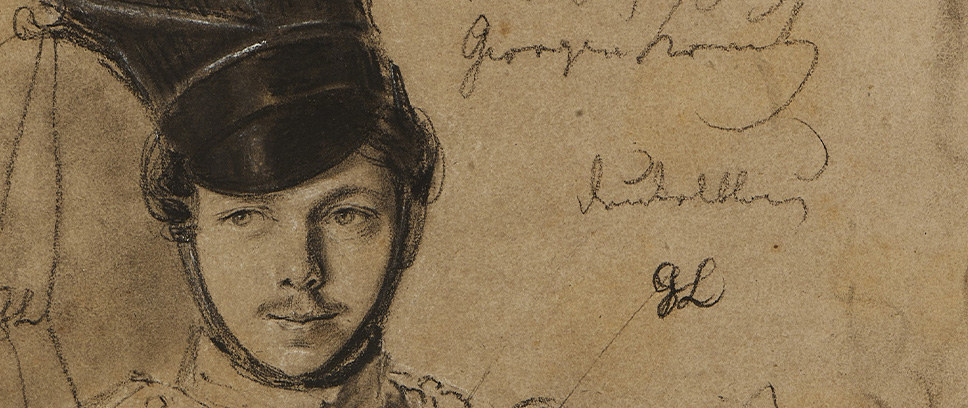
Lost and Found: Two drawings by Franz Krüger
Dr. Heike Krokowski | 9 April 2025
The blog series on the collection work of the Deutsches Historisches Museum (DHM) deals with core questions such as the decision for or against the acquisition of certain objects, the different ways in which they are found and acquired, the changing research questions posed by the objects in the collections, the provenance and origin of the objects, and many other aspects.
Beside the search for museum objects from possible Nazi persecution contexts or confiscations and dispossessions that occurred in the Soviet occupation zone und later in the German Democratic Republic (GDR) as well as cultural goods from colonial contexts, many museums in Germany are also concerned with losses from their collections that occurred through war. This is the case with the Deutsches Historisches Museum, to which the collections of the pre-1945 Zeughaus were transferred. The history of this erstwhile enormous stock of objects related to military history is still being researched by the DHM’s technical experts and provenance researchers. Among these objects are two drawings by the Berlin artist Franz Krüger. Dr Heike Krokowski, scientific staff member of the DHM’s provenance research department, tells us their story.
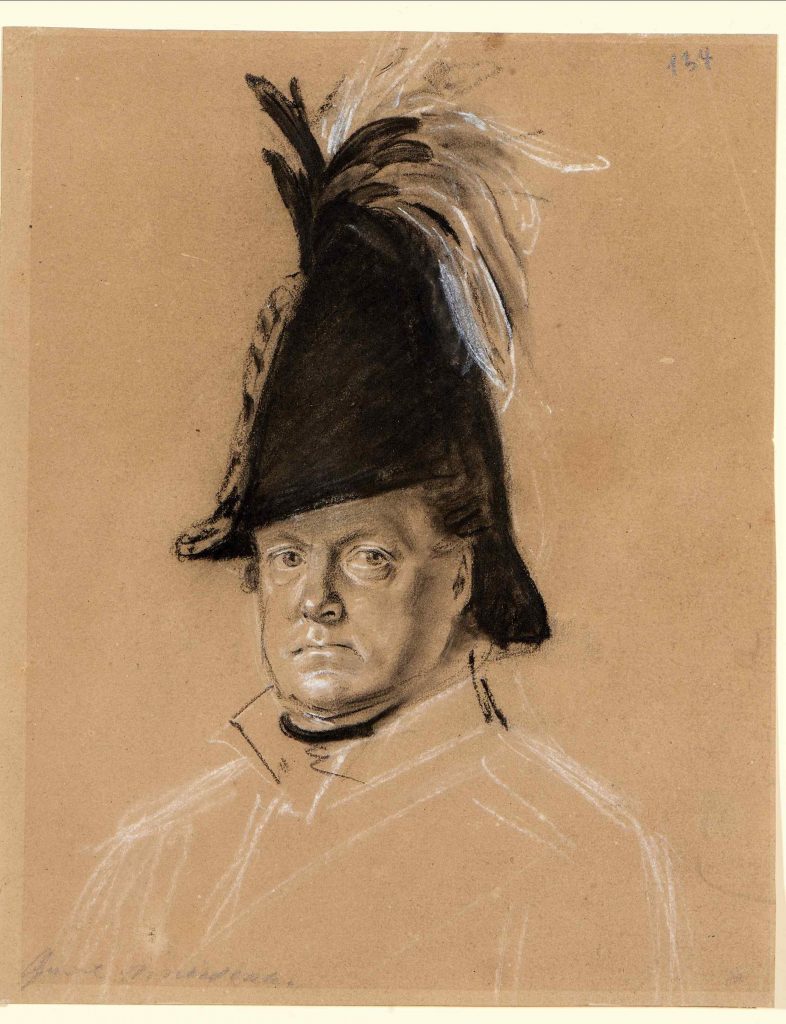
The elderly gentleman with the striking, feathered hat looks rather glum: staring straight at the observer, he reveals almost nothing about himself. Nevertheless, we know that this is a portrait sketch of Prussian General Field Marshal Graf Neidhardt von Gneisenau. The artist Franz Krüger made the drawing in 1818 as a study for an oil portrait of Gneisenau on horseback together with other figures, a so-called retinue picture. The large-format painting belonged to the Gneisenau family from the time it was completed in 1819.
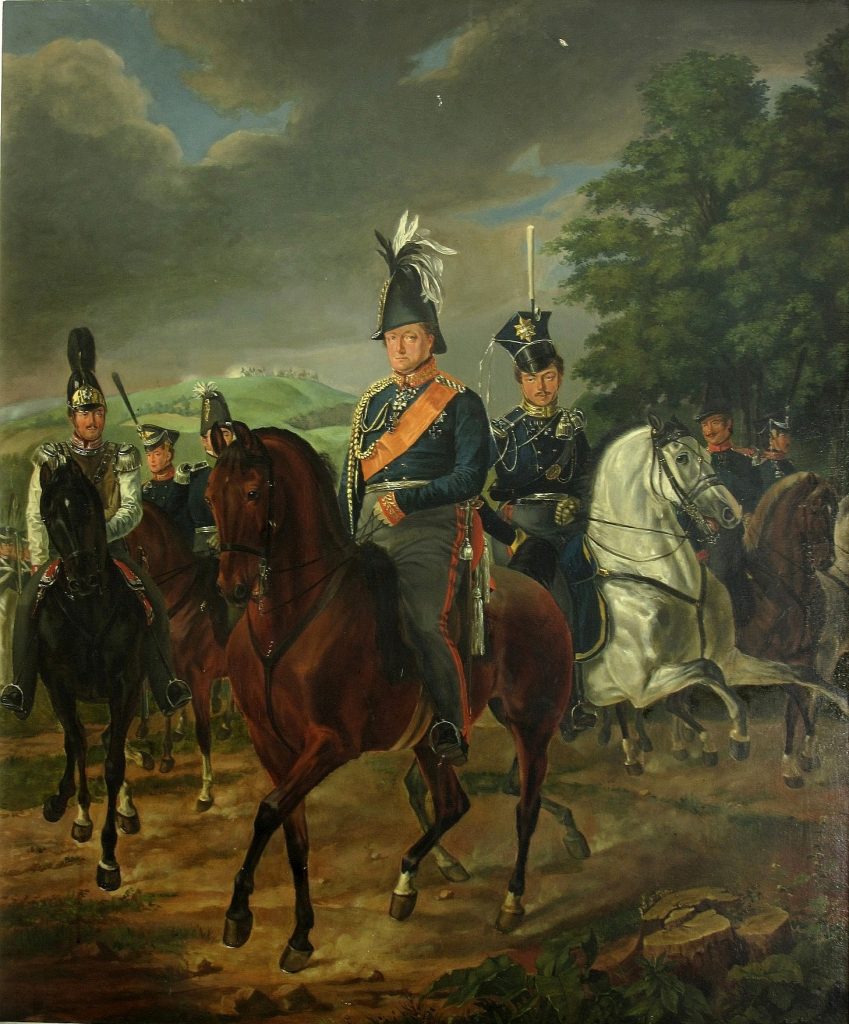
But Gneisenau’s counterfeit was not the only sketch Krüger made while preparing the large painting. At least two other drawings existed which were offered on the art market in the 1940s. One of them – a three-quarters study of a young uhlan officer (lancer) covered with notes about the colouring of the uniform – was purchased in February 1942 together with the portrait of the general in a gruelling “bidding war” at an auction in Leipzig. It was won by the Zeughaus, which functioned as the army museum of the Wehrmacht at the time.
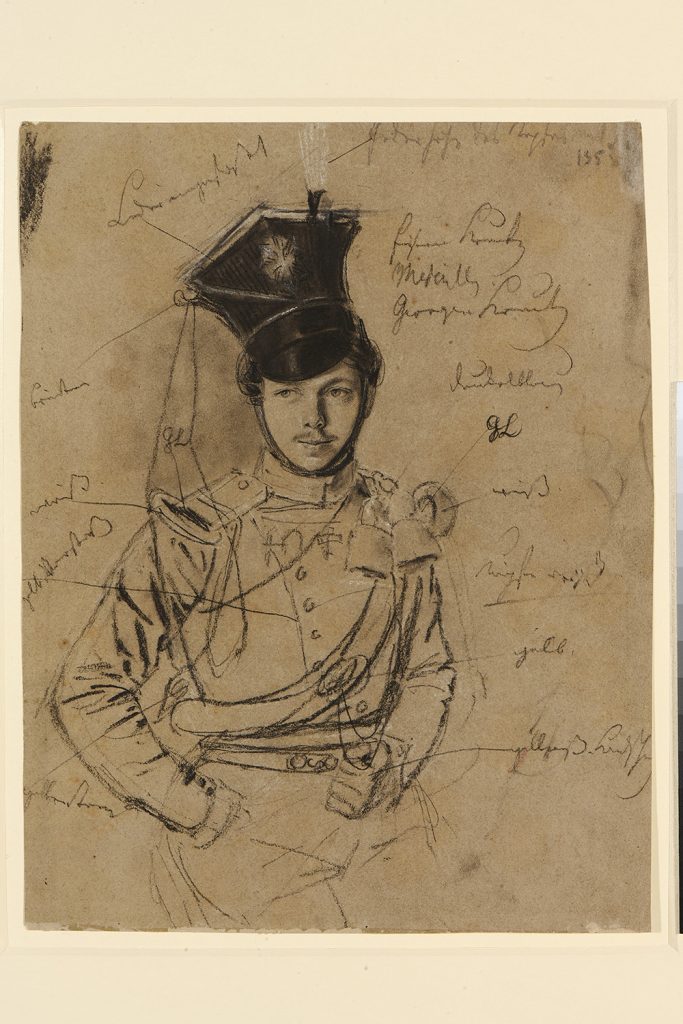
Both drawings were inventoried and photographed in the Zeughaus. The glass negatives made at the time are the only remaining traces of the drawings in the present collection of the DHM.

The drawings themselves are no longer among the museum’s possessions. And this is a result of the Second World War. For many years the sketches were considered war losses and as such were entered in the LostArt database of the German Centre for Lost Cultural Assets and published in the catalogue of the Berlin Zeughaus losses.[1] Triggered by clues given by two colleagues, extensive research on the eventful location history and the present whereabouts of Franz Krüger’s two portrait sketches began.[2]
After the drawings were bought at auction in the third year of the war, they did not remain in the Zeughaus for long. In the summer of 1943 they were removed from the museum together with many other objects to protect them from the bombing attacks on Berlin. First they were kept in the flak tower at the Berlin Zoo, a defence structure that was supposed to withstand all attacks. At the beginning of 1945, as the front was rapidly approaching Berlin, the collections of the Berlin museums – including the two drawings from the Zeughaus – were transported to coal and salt mines. The drawings came to the town of Merkers in the northern Rhön region and were stored there in the Kaiseroda mine tunnel. Berlin museum officials accompanied the transports in order to care for and guard the cultural goods of the museums.
The DHM was able to trace the ongoing journey of the sketches with the aid of the evacuation and transport lists of the objects. In April 1945, the American troops advanced into Thuringia and occupied the mines in Nordrhön. The items from the Berlin museums that had been stored in the mines in Merkers and in other mine tunnels were secured and, after the capitulation of the German Wehrmacht at the beginning of May 1945, transported to Frankfurt and shortly thereafter on to Wiesbaden, where they were placed in a depot of the Landesmuseum Wiesbaden that had been established by the US Army, called the Central Collecting Point. Large parts of museum collections that had been evacuated for their own protection were brought there from throughout Germany. When the Federal Republic of Germany was founded in 1949, the objects from museums in the Federal Republic were returned to their original locations. But at first, the collections from museums that were now located in the territory of the German Democratic Republic remained in the west under the trust management of the state of Hessen. It was only in the second half of the 1950s that it was decided to return these objects to museums in East Germany.
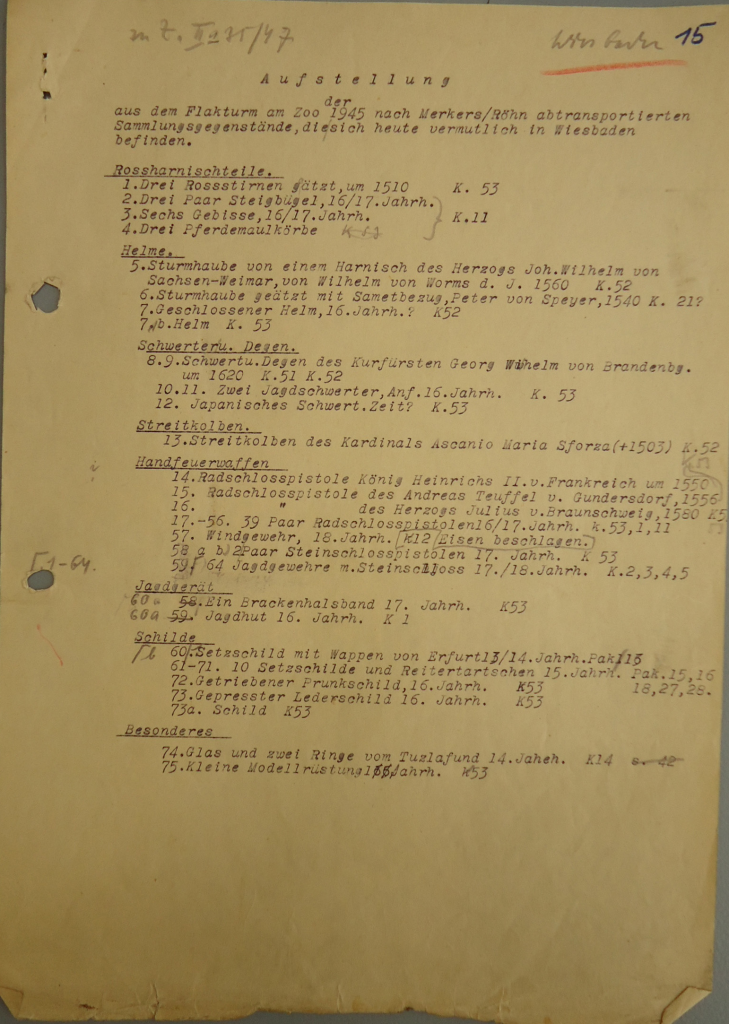
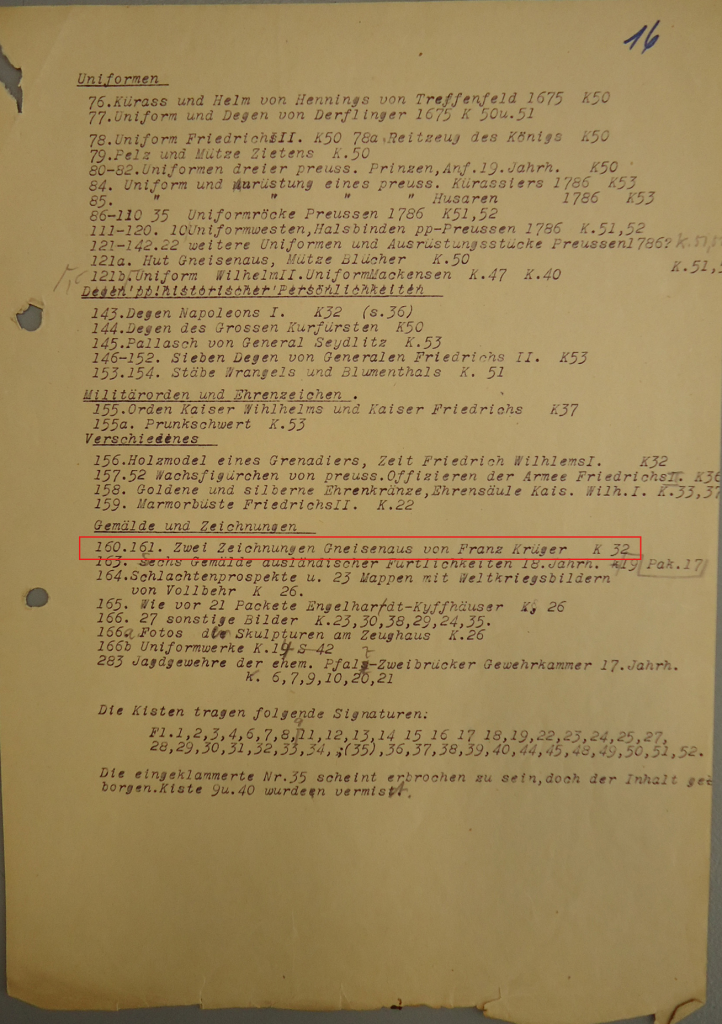
As the research showed, the drawings of Field Marshal von Gneisenau and the uhlan officer from the – now East Berlin – Zeughaus remained in Wiesbaden until the summer of 1958. In August of that year they were transported with all the other Zeughaus objects to West Berlin. There, they were consigned to the care of the Stiftung Preussischer Kulturbesitz, which had been founded in 1957 as the provider of the state museums located in the western part of Berlin.
Gneisenau and the officer were brought to a State Museum depot in the barracks of the Guards Rifles in Berlin-Lichterfelde. In 1968 they were moved together with other Zeughaus items to another part of the same depot, but then all traces of the drawings were apparently lost.

But they reappeared: In 1984, the AGO art gallery in West Berlin showed the two sketches in the framework of the exhibition “Drawings and Paintings in the Time of Goethe” [3] and sold them that year to an art collector from northern Germany. In the year 2000, he turned them over to the Lübeck Museum Behnhaus Drägerhaus on permanent loan and later converted the loan into a donation. That year, the ownership of the Field Marshal drawing was transferred to the Land Schleswig-Holstein, which then returned the sketch to the museum on permanent loan.[4] Our provenance research could thus confirm that both drawings are now legally among the holdings of the Lübeck Museum Behnhaus Drägerhaus. Consequently, the search announcement of the war loss was deleted from the LostArt database. In future, the two museums have agreed to officially point out the origin and whereabouts of the two works.[5]
The DHM has not forgotten the two drawings by Franz Krüger: the museum still has both glass negatives from 1942. In the meantime, they are part of the DHM collection of objects.
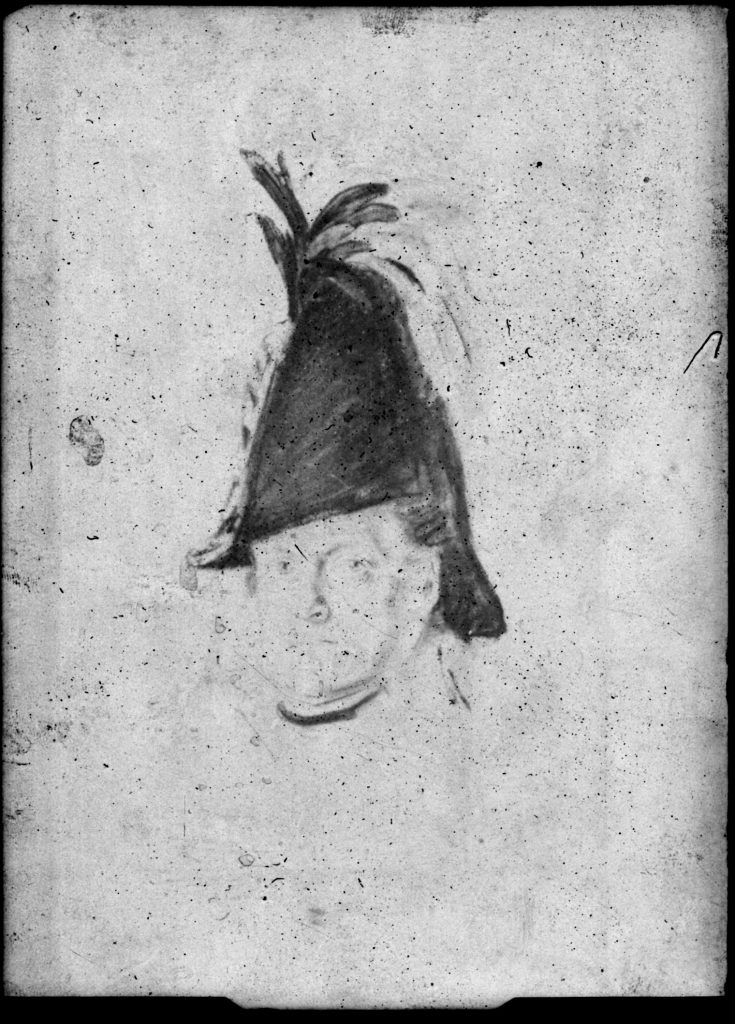
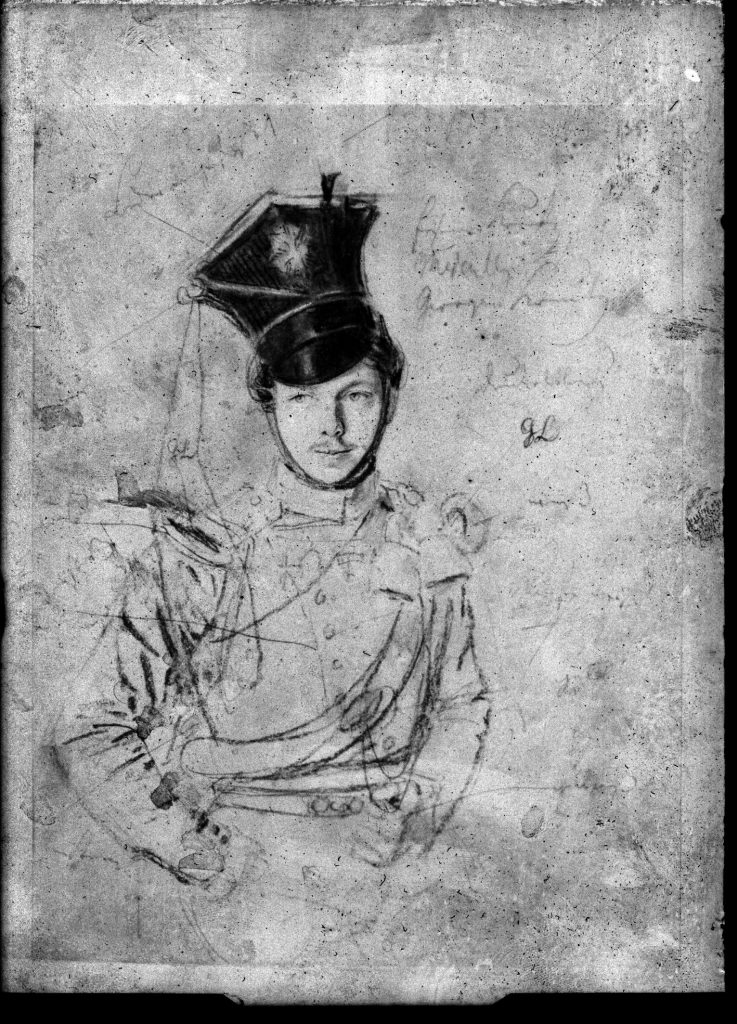
[1] Quaas, G./König, A.: Verluste aus den Sammlungen des Berliner Zeughauses während und nach dem Zweiten Weltkrieg, Berlin 2011, p. 306/307, Nr. 1429 (false ill.) and 1430. https://www.lostart.de/de/Verlust/438871; https://www.lostart.de/de/Verlust/438869 (last accessed 14.12.2023).
[2] Special thanks goes to Steffi Grapenthin and Dr Caroline Flick.
[3] AGO Galerie Wolfgang Thiede: Zeichnung und Malerei der Goethe-Zeit. Vom Rokoko zum malerischen Realismus (autonom–malerischen Realismus), Berlin 1984, pp. 142-145.
[4] Cf. Heise, Brigitte (ed.): Zum Sehen geboren. Handzeichnungen der Goethezeit und des 19. Jahrhunderts. Die Sammlung Dräger/Stubbe, Leipzig 2007, p. 173/174.
[5] With thanks to Dr Alexander Bastek, Director of the Museum Behnhaus Drägerhaus, Lübeck, for permission to use reproductions of the two portrait sketches in this article.